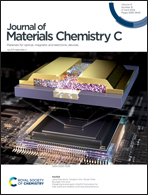Recent developments in the state-of-the-art optoelectronic synaptic devices based on 2D materials: a review
Abstract
The synaptic plasticity observed in biological synapses encompasses various timescales crucial for memory, learning, and diverse signal processing with minimal power consumption. Likewise, the synaptic devices, a cutting-edge paradigm in neuromorphic engineering, use external stimuli to replicate biological synaptic functions with utmost energy efficiency, circumventing the constraints imposed by the von Neumann bottleneck. Due to their inherent characteristics like near-atomic thickness, tunable bandgap, defect-mediated states, robust electrical–optical response, high compatibility, and scalability, 2D materials hold significant potential as building blocks for optoelectronic artificial neuromorphic devices. In particular, the distinctive traits of 2D materials facilitate notable improvements in synaptic performances, including learning capability and power efficiency, depending on the materials, device architectures, and external stimuli. This review focuses on state-of-the-art developments in device structures, working principles, design strategies of materials, and the integration of 2D material-based optoelectronic synaptic devices. Herein, different biological synaptic functions with timescales are introduced first, followed by the working mechanism of optoelectronic synaptic devices based on 2D materials. Furthermore, the syntheses and exfoliation of 2D materials, including their heterostructures (2D–0D, 2D–1D, and 2D–2D) and different device configurations (2 or 3 terminal integrated devices), are outlined for synaptic applications. The specific applications of 2D material-based optoelectronic synapses in Boolean functions, visual image memorization, and image processing are emphasized, with subsequent discussions addressing the current challenges and future perspectives in this field.

- This article is part of the themed collection: Journal of Materials Chemistry C Recent Review Articles


 Please wait while we load your content...
Please wait while we load your content...